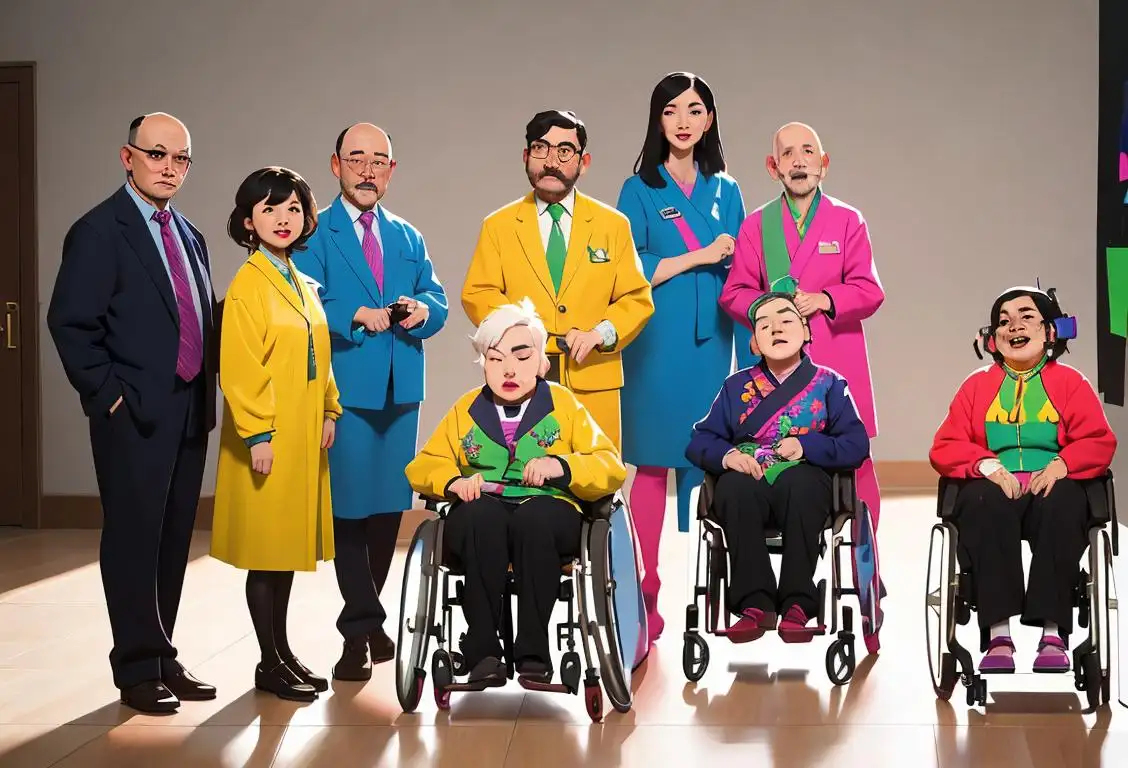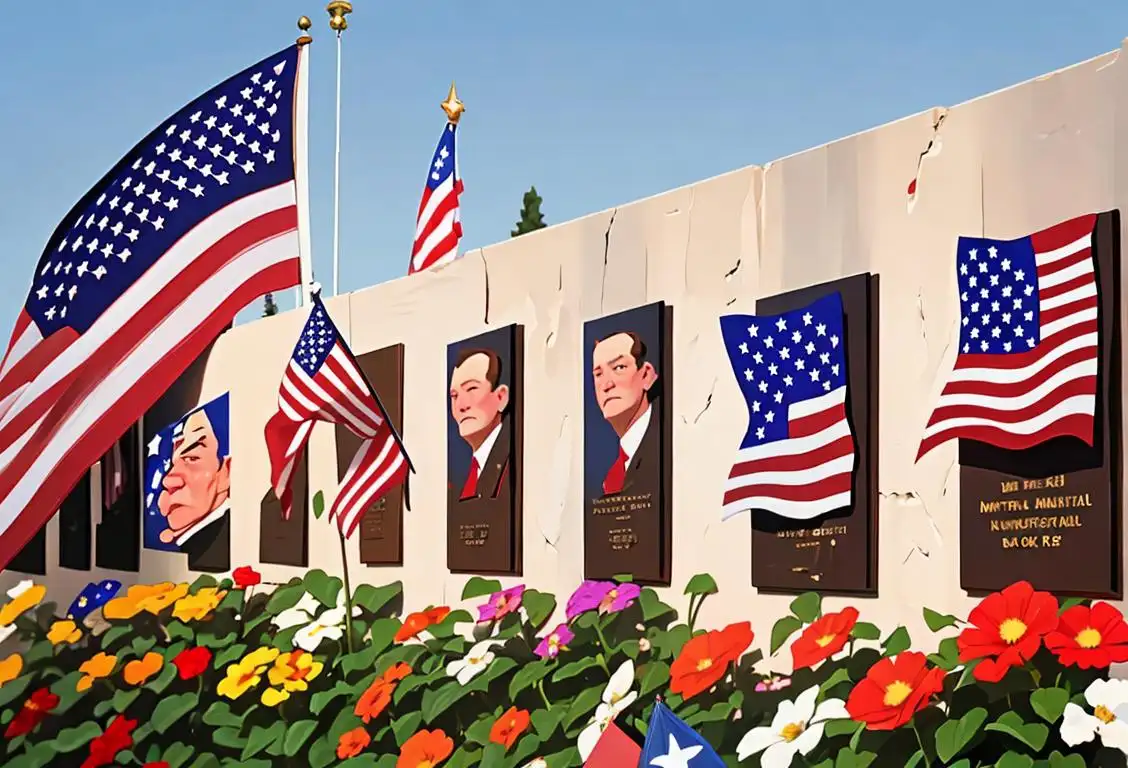National Sign Language Day

Welcome to National Sign Language Day, where we celebrate the power of hand gestures and silent conversations! Get ready to flex your fingers and learn some interesting facts about this incredible form of communication.
When is Sign Language Day?
It's national sign language day on the 3rd February.
The Birth of National Sign Language Day
Every year on National Sign Language Day, we take a moment to recognize and appreciate the beauty of sign language. This day is all about spreading awareness, promoting inclusivity, and celebrating the rich history of this unique language.
The origins of sign language date back centuries, with various forms of visual communication being used by deaf communities around the world. The modern sign languages we know today developed as a means for the deaf to communicate with each other and with the hearing world.
It wasn't until the 18th century that formal sign languages began to evolve. In 1755, Charles-Michel de l'Épée, a French cleric, founded the first free public school for the deaf in Paris. He created a standardized sign language system, known as Old French Sign Language, to facilitate communication between students.
Sign language continued to evolve and adapt, giving rise to different regional variations. American Sign Language (ASL), for example, developed in the early 19th century and is one of the most widely used sign languages in North America today.
Celebrating National Sign Language Day
On National Sign Language Day, individuals and communities come together to celebrate the importance of sign language and its impact on the lives of deaf individuals. Here are a few ways you can join the celebration:
- Learn the basics: Take the opportunity to learn a few basic signs and alphabet letters. There are numerous online resources and tutorials available to get you started.
- Engage with the deaf community: Attend sign language workshops or events in your local area to interact with members of the deaf community and learn more about their experiences.
- Spread awareness: Share informative articles, videos, or personal stories on social media to raise awareness about sign language and promote inclusivity.
- Support organizations: Consider donating to organizations that provide resources, education, and support to the deaf community. Your contribution can make a significant difference in someone's life.
Did You Know?
Did you know that sign language is not universal? Just like spoken languages, sign languages have their own unique vocabulary and grammar systems. There are over 300 distinct sign languages used worldwide, each with its own cultural and regional influences. So, while sign language is a universal way for the deaf to communicate, the specific signs may vary depending on the country or region.
History behind the term 'Sign Language'
18th century
Emergence of Sign Language
During the 18th century, deaf communities around the world began developing their own forms of sign language. These languages developed spontaneously, as deaf individuals communicated with one another and created gestures and signs to convey meaning. The precise origins of sign language are difficult to trace, as they often emerged organically within localized deaf communities.
1755
First Recognition as Language
In 1755, the first recorded recognition of sign language as a legitimate language occurred. Abbé Charles-Michel de l'Épée, a French priest, established the first public school for the deaf in Paris. He developed a system of signs and gestures to communicate with his students. His work laid the foundation for the recognition of sign language as a distinct language with its own grammar and syntax.
1817
Institutionalization of Sign Language
The formal recognition and institutionalization of sign language took place in 1817 with the founding of the American School for the Deaf in Hartford, Connecticut. The school, led by Thomas Hopkins Gallaudet and Laurent Clerc, aimed to provide formal education for deaf students. American Sign Language (ASL) was developed as the primary language used by the school, further solidifying the status of sign language as a legitimate means of communication.
1880
Milan Conference and Oralism
In 1880, a major event in the history of sign language occurred at the International Congress on Education of the Deaf in Milan. Attendees at the conference, dominated by hearing educators, passed a resolution banning the use of sign language in educational institutions. This decision, known as the Milan Resolution, led to the widespread adoption of oralism, a teaching method focused on speech and lip reading. Sign language was suppressed and stigmatized for several decades as a result.
1960s
Recognition and Revival
During the 1960s, there was a significant shift in attitudes towards sign language. Linguists and researchers started recognizing sign languages as fully-fledged languages and distinct from spoken languages. The revival of sign language as a legitimate means of communication gained traction, leading to increased linguistic and cultural studies. This recognition and rehabilitation helped promote the acceptance and development of sign language across the globe.
Today
Vital Language and Cultural Identity
Sign language is now recognized as a vital means of communication for deaf and hard-of-hearing individuals worldwide. It is estimated that there are over 300 different sign languages in use today. Sign language not only facilitates everyday interactions, but it also serves as a powerful expression of cultural identity within deaf communities. Advances in technology and accessibility have further improved the distribution and recognition of sign languages in recent years.
Did you know?
Did you know that sign language is not universal?Tagged
awareness inclusivityFirst identified
15th April 2016Most mentioned on
3rd February 2021Total mentions
56Other days
Sign Language Day
Coming Day
Pronouns Day
Level Job Portal For Pwds Launched To Mark Nhfdc Foundation Day
Disabilities Day
Leggings And Yoga Pants Day
Pronoun Day
Memorial Day
Heroes Day
Former Prisoner Of War Recognition Day








